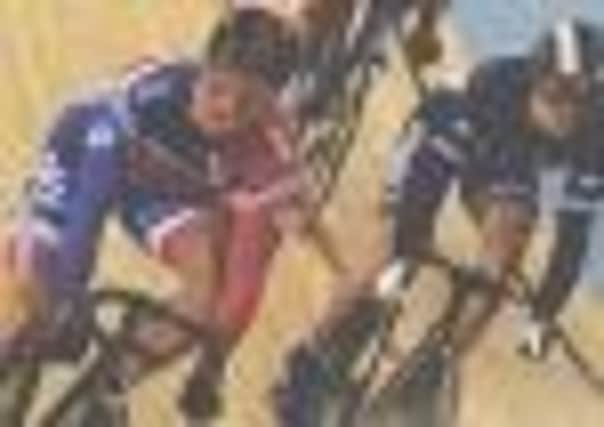Cycling: New rule can’t slow Chris Hoy


The reigning Olympic champion had to go faster than he’s ever gone before – 78.1kph on the back straight in the final – but maintained a 100 per cent record in the three rounds, winning each one from a different position, to claim his 35th World Cup gold medal.
The final became a fascinating tactical tussle with Mickael Bourgain of France, who looked outstanding in winning his semi-final. Hoy’s nerve was tested when another strong rider, Rene Enders of Germany, seized the initiative and opened a gap as they came up to two laps to go, but Hoy, shadowing Bourgain, did a dummy attack, forcing Bourgain to respond as Hoy sat back and tucked in behind him.
Advertisement
Hide AdAdvertisement
Hide AdWhen Hoy hit the gas at the bell, Bourgain had narrowed the gap to Enders but he was tiring and Hoy was able to pass him just before the line. The 6,000-strong crowd, who provided vocal support all night, erupted and Hoy milked it for all it was worth. “As you can see,” he said afterwards, “I was quite chuffed.”
One reason for that, apart from the victory, was that he has added so many more strings to his bow. When he won gold in the keirin at the Beijing Olympics, and indeed at the world championships in 2007, 2008 and 2010, he did so using the same tactic each time – going from the front. So much power was he able to generate that nobody could get round him. Now, however, a new rule makes this tactic less successful. Cycling’s governing body, the UCI, has declared that the rider in first place has to tuck in close behind the pace-setting motorbike, as opposed to being able to drift back. Potentially this gives the other five riders the advantage of being able to sit back and then gain a jump on the lead rider when the motorbike swings off with two and a half laps to go.
Hoy said: “In every race I tried to do something different so you can learn if it works or not.” He should have learned a lot from his day’s work here, with a close call in the first round, which he won narrowly after leaving his effort dangerously late, and then a more convincing win in the semi-final. He had found himself boxed in for that one, but manoeuvred his way out of the melee.
“I had a couple of game plans for the final and the one I used was plan B,” Hoy said. “I knew that Bourgain was going to be a threat, because he looked so strong in the semi, so I let him do the chasing. I had to choose the moment to go and give it everything. The sports scientists have told me that I hit 78.1kph in that race, which is the highest I’ve ever gone in a keirin before. You can’t ask for more than that.
“There’s always a possibility you can lose, you never go into a keirin and expect to win,” continued Hoy. “You try and narrow the odds down a bit, but there’s so much going on around you, and so much danger. All you can do is race to your strengths. I could have tried to go from the front, as I used to do, but I’m trying to race with other tactics. It’s nice to win from all positions.”
As for the rule change, Hoy said: “It makes it harder for the guy who is behind the bike, and gives the other five riders an advantage, which is a bit unfair I think. There was no consultation over the change – there’s never any consultation.”
After winning a bronze medal in Friday’s team sprint, Hoy completes his weekend today with the sprint, where he could face his team-mate and main rival for the one Olympic spot in the GB team, Jason Kenny.